Coastal Plains Toad in
the Houston Backyard
I grew up in the woods. Well, not literally. I mean we had a
house with most if not all of the modern amenities[i],
but we had several hundred acres backing to thousands of acres of wild lands. I
spent a lot of time out on the land. A lot of my fondest memories are of
innumerable expeditions down old railroad tracks, over hidden meadows, over
ponds and streams, into deep forests.
Our NY Backyard
Given our bucolic locale, we had a wealth of wildlife
continually parading through our property, yard, and occasionally house. Deer,
bear, coyotes and coydogs, rabbits, mice voles, hawks, passerine birds of all
sorts, woodchucks[ii],
muskrats, chipmunks and other rodents, seemingly giant snapping turtles, a
myriad of frogs, snakes, porcupines, raccoons,
barn cats, stray dogs, and on many occasions, our neighbors’ cows. They
were part of us and we were part of them. I knew where to find the garter snakes
(sunning themselves on the old levered flagstone of the path down to the road),
the very best places for frogs[iii],
and where the deer were bedding down.
Many of our favorite family stories involved wildlife of one type or
another[iv].
(It’s not much of a surprise, therefore,
that I pursued a career in the environment.)
Porcupine in the Garage…Again,
Justin and Zak Hunting Frogs
I was lucky, through grad school, to primarily live in
places with ample open space. I went to college at a campus overlooking the
sweep of the Genesee River Valley, with arboretum and open land all around it.
I lived in Rochester for a time on the edge of Irondequoit Bay, overlooking
hilly forests and wetlands leading out to the Bay and Lake Ontario. Even my
deathtrap[v]
grad school apartment backed to farm fields and green space.
Genesee Valley Sunset
1994, Irondequoit Sunset 1999, Delaware Farmscape 2001
It wasn’t until I moved to Houston that I truly lived in a
dense urban environment cut off from nature. I’m lucky to have some large open
space areas fairly nearby, and some wonderful local parks, but our house is on
a fraction of an acre, with sterile landscaping in a flat land. It’s a far, far
cry from the rolling fields of home, bursting with life. It has not been an
easy transition.
Houston Skyline: My
entire home town could fit in one of these buildings, easily.
The Houston backyard…all
600 square feet of it.
But even in these adverse conditions, “life finds a way”.
I’ve kept track of the various species I’ve seen in my yard or flying overhead.
Part of it is obsessive listing and nature geekery, but I think a good deal of
the motivation is part of that universal desire to connect to your past. For
me, that’s a past pretty heavily interwoven in sense of place and the natural
world. “Home” is inextricably bound with living things to me. So far I’ve noted
close to 75 different species either in and around our home, or flying through
our airspace, including birds, amphibians, reptiles, mammals, butterflies and
moths, dragonflies, other insects, and spiders[vi].
A small sampling of the
75 “House Species”.
I regret I won’t be able to give my forthcoming daughter an
endless backyard of forest and meadow, or the sense of place I grew up with. I
doubt I’ll even be able to explain it to her. So much of it is the soup of
unfettered sensory imagery of childhood in a green growing place.I wish I could
sit with her at a big bay window and point out hawks soaring above our fields,
or catch frogs with her in the garden like my parents did with me. But I
guarantee she will know by name the things that do live in our little suburban
postcard lot, and hopefully the wonder of small places will plant a seed for
the future.
NOTES
[i] In
the dead of winter, whether the vague thermal emanations from our ancient
baseboard heating system could be counted as “heat” was wholly a matter of
subjective opinion. Also, I lived in the era in which your tv channel options
were either four fuzzy channels (one of the CBC), or to buy a satellite dish
roughly approximating the reflecting dish on the Death Star’s primary weapon.
With this expensive monstrosity you could get MTV, and thus enter into the
rarified strata of landed gentry. Our family went the four channel route. I do
not regret this, however. I watched a lot of CBC and am better off for it. I do
regret the heat thing, though.
[ii]
My father had an ongoing war with the woodchucks that made their home in our
northern lawn. He never resorted to firearms or traps; his offensives were primarily
a matter of cursing and jury-rigged protections for the little trees they had
planted, which never took off. There was one little tree in particular that was
an ongoing conflict point. Dad blamed the woodchucks for attacking the bark,
though it was likely deer in retrospect. He’d wrap the tree, and erect little
fences around it, and the struggle would go back and forth over a period of
years. One year he allowed a nearby business to store some of their vehicles in
our old, unused barn. As a repayment, I assume, they spent part of a day mowing
our fields, and generally cleaning up the property. I remember it vividly even
though I couldn’t have been older than late elementary school. It was a golden
afternoon in Indian summer, where the light was particularly effusive. When I
got off the bus, it was immediately obvious that something had changed
drastically…fields of grass were gone, the barn was spruced up, and men were
roving around like shades of field hands out of the property’s past. I remember
being terribly excited, out exploring all the “new” spaces around the property.
That excitement immediately ended when I made my way over to the north lawn. I
arrived just in time to see some of the workers chainsaw down that little tree.
[iii]
Which I collected as a kid, herding vast flocks into our little wading pool,
only to release them when I deemed I had finally found enough. The very best
place for frogs was the edge of the garden plot. If one walked, scuffing one’s
feet along that edge, you would inevitably spook dozens of little leopard frogs
and once in a while a choice prize of bullfrog.
[iv]
Like the time my sister, in elementary school, was given a small chick (or
maybe duckling?) to take care of. It lived its brief time in a box in our
garage, right below the wing of the house my room was in. It peeped
incessantly, all night long, but my sister loved it dearly. One night, it was
peeping away as it always did, until suddenly therte was an exceptionally loud
and sustained peep, and then silence. We ran to the garage in time to see a
raccoon climbing out under the eaves with a little yellow bundle in its mouth.
While I’m sure we comforted my sister, I’m also sure all of us had a shameful
joy at the cessation of the endless peeping.
[v] Literally.
But that’s a story for another day.
[vi]
In terms of species, it includes 40 birds (13 flyovers, 27 yard birds), 3
amphibians, 3 reptiles, 3 mammals, 6
butterflies and moths, 1 dragonfly, 10 other insects, and 10 arachnids. Here is
the complete list.
|
Birds
|
Date Seen
|
|
Carolina Wren
|
Fall 2011
|
|
Northern Cardinal
|
Fall 2011
|
|
White-winged Dove
|
Fall 2011
|
|
Mourning Dove
|
Fall 2011
|
|
Northern Mockingbird
|
Fall 2011
|
|
Blue Jay
|
Fall 2011
|
|
Black-bellied Whistling Ducks (flyover)
|
Fall 2011
|
|
Ruby-throated Hummingbird
|
Fall 2011
|
|
Orange-crowned Warbler
|
Winter 2011/2012
|
|
Cedar Waxwings
|
Winter 2011/2012
|
|
Yellow-rumped Warbler
|
Winter 2011/2012
|
|
House Sparrow
|
Winter 2011/2012
|
|
American Goldfinch
|
Winter 2011/2012
|
|
Black Vulture (fly over)
|
Winter 2011/2012
|
|
Turkey Vulture (fly over)
|
Winter 2011/2012
|
|
Great-tailed Grackle (fly over)
|
Spring 2012
|
|
Carolina Chickadee
|
Spring 2012
|
|
White Ibis (fly over)
|
Spring 2012
|
|
Cattle Egrets (fly over)
|
Spring 2012
|
|
Great Egret (fly over)
|
Spring 2012
|
|
Great Blue Heron (fly over)
|
Spring 2012
|
|
Common Nighthawk (fly over)
|
Spring 2012
|
|
American Crow (fly over)
|
Spring 2012
|
|
Yellow-crowned Night Heron
|
Summer 2012
|
|
Red-shouldered Hawk
|
Summer 2012
|
|
Downy Woodpecker
|
Fall 2012
|
|
Blue-grey Gnatcatcher
|
Spring 2013
|
|
Cooper's Hawk (flyover)
|
Spring 2013
|
|
Purple Martins (flyover)
|
Spring 2013
|
|
Hooded Warbler (female)
|
Spring 2013
|
|
Yellow-breasted Chat
|
Spring 2013
|
|
Black-and-White Warbler
|
Spring 2013
|
|
Yellow Warbler
|
Spring 2013
|
|
Ovenbird
|
Spring 2013
|
|
Common Yellowthroat
|
Spring 2013
|
|
House Finch
|
Winter 2011/2012
|
|
oriole sp.
|
Spring 2013
|
|
Amphibians
|
|
|
American Toad
|
Fall 2011
|
|
Coastal Plains Toad
|
Spring 2012
|
|
Rio Grande Chirping Frog
|
Spring 2012
|
|
Reptiles
|
|
|
Carolina Anole
|
Fall 2011
|
|
Brown Anole
|
Fall 2011
|
|
Mediteranean House Gecko
|
Fall 2011
|
|
Mammals
|
|
|
Virgina Oppossum
|
Winter 2011/2012
|
|
Eastern Gray Squirrel
|
Winter 2011/2012
|
|
Roof Rat
|
Spring 2012
|
|
Butterflies and Moths
|
|
|
Gulf Fritillary
|
Fall 2011
|
|
Lunate Zale Moth
|
Fall 2011
|
|
Monarch
|
Winter 2011/2012
|
|
Question Mark
|
Spring 2012
|
|
Variegated Fritillary
|
Spring 2012
|
|
Longtail Skipper
|
Winter 2012/2013
|
|
Dragonflies
|
|
|
Blue Dasher
|
Summer 2012
|
|
Other Insects
|
|
|
Green/Common Lacewing (Chrysopidae family)
|
Winter 2011/2012
|
|
Crane Fly (Tipulidae Family)
|
Winter 2011/2012
|
|
Honey Bee (Apis mellifera)
|
Winter 2011/2012
|
|
Earwig sp.
|
Spring 2012
|
|
Pill Bug (Family Armadillidiidae)
|
Spring 2012
|
|
Lady Bug (family Coccinellidae)
|
Spring 2012
|
|
Bumblebee (Bombus sp.)
|
Summer 2012
|
|
Mosquito (Various Culcidae sp.)
|
Winter 2011/2012
|
|
Assassin Bug
|
Summer 2012
|
|
Carpenter Bee
|
Spring 2013
|
|
Arachnids
|
|
|
Jumping Spider (Salticidae Family)
|
Fall 2011
|
|
Hacklemesh Weaver (Amaurobiidae family)
|
Winter 2011/2012
|
|
Triangulate Cobweb spider
|
Spring 2012
|
|
Wolf Spider (Lycosidae Family)
|
Spring 2012
|
|
Green Magnolia Jumper (Salticidae species)
|
Summer 2012
|
|
Southern House Spider
|
Summer 2012
|
|
Trashline Orbweaver
|
Summer 2012
|
|
Spiny-backed Orbweaver
|
Summer 2012
|
|
Orchard Spider (Leucage venusta)
|
Spring 2013
|
|
Orbweaver sp.
|
Spring 2013
|

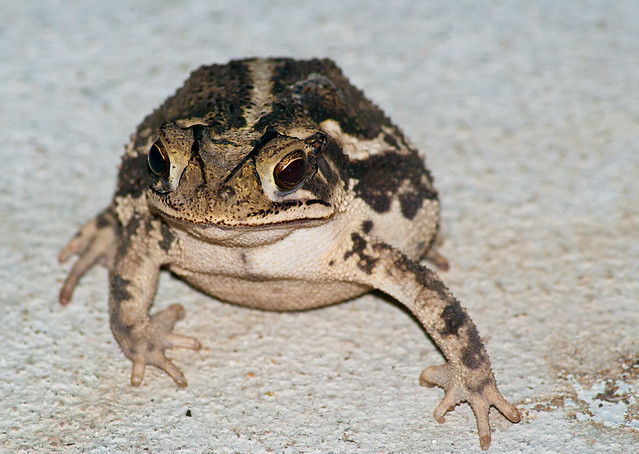

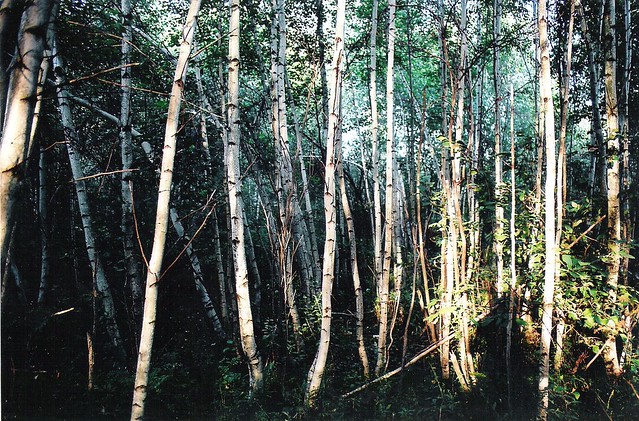
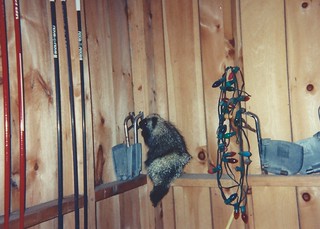
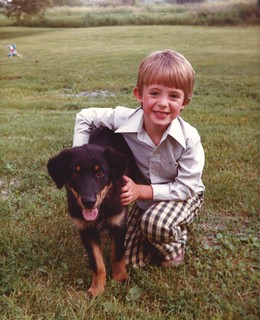
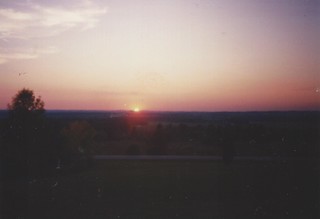
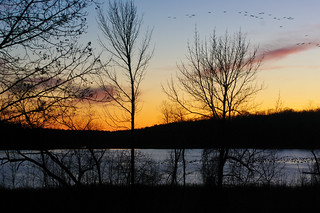

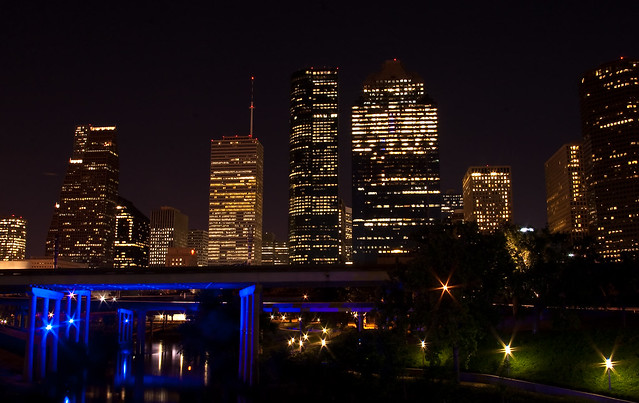
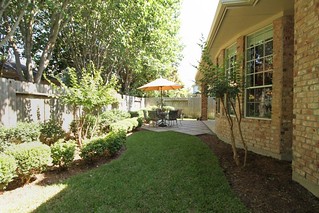
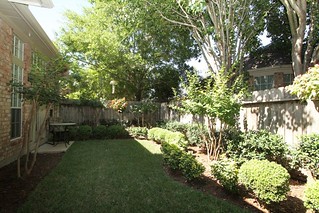
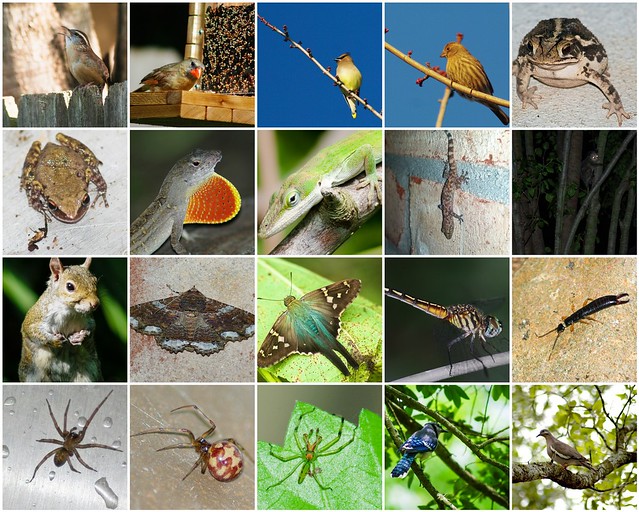
No comments:
Post a Comment